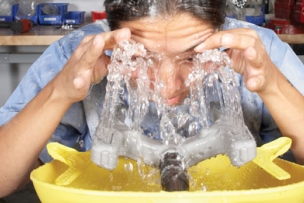The Sqwincher formulation is the result of research and development that goes well beyond quenching thirst to deliver rehydration for the toughest of work conditions. Sqwincher is a higher level of hydration, with a variety of enjoyable flavors and formulations that address worker health conditions and rehydrate and refuel the body by replacing fluids and essential electrolytes lost to dehydration and physical exertion. Sqwincher is Hydration That Works.
How can you encourage employee hydration when they say they aren’t thirsty? Hydration at the workplace is an important issue – there’s no question about that. But when your employees resist taking regular drinks because they don’t feel thirsty, it can throw a wrench into your hydration plan.
There’s one great way to get around this issue: educate your workers. It’s a common misconception that thirst is the first indicator that your body needs more fluid. In all likelihood, your employees probably think they are being prudent by drinking when they feel thirsty. In fact, the feeling of being thirsty indicates that mild dehydration is already starting to set in.
You need to clear up this misconception. To start, let your workers know why dehydration is an issue. This could be as simple as sending an email blast at the beginning of each week (or maybe every morning for a week or two) with some key facts about dehydration and its effects (learn more about The Dangers of On-the-Job Dehydration).





Talk to Us!
Leave a reply
Your email address will not be published. Required fields are marked *